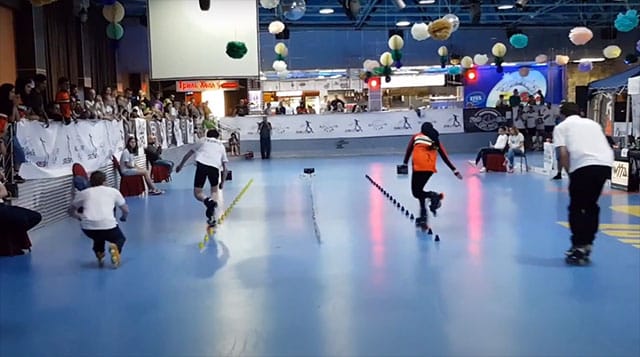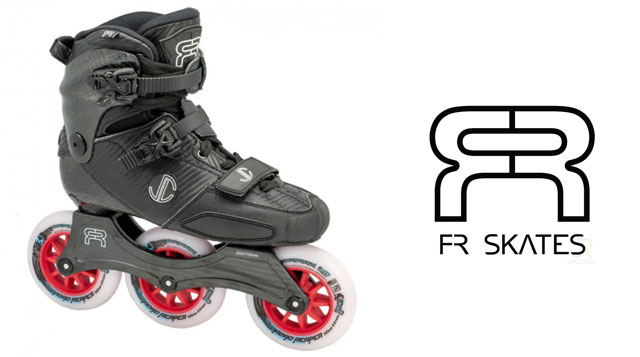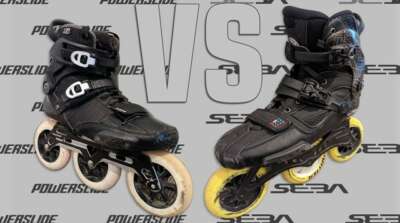Speed Slalom: The advent of the 3×110 mm set-up
Par alfathor |
Publié le 20 July 2015 |
Mis à jour le 3 November 2020 |
Catégories :
Slalom skating
All
Slalom skating
| Sous-catégories :
how to choose your roller-skates and inline skates
how to choose your roller-skates and inline skates
| 14534
| Tags :
speed-slalom
3x110 mm Speed Slalom
3x110mm slalom
3x110mm set-up
For several months now, 3×110 m short frames have invaded speed slalom competitions. Alexandre Claris, Yohan and Jimmy Fort have already adopted this set-up with success. OLS analyses the frame to discover its pros and cons…
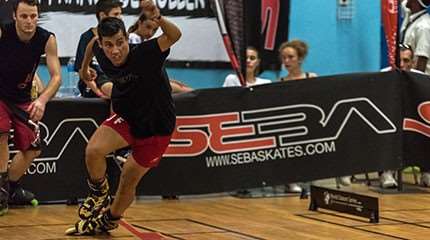
A practice constantly evolving
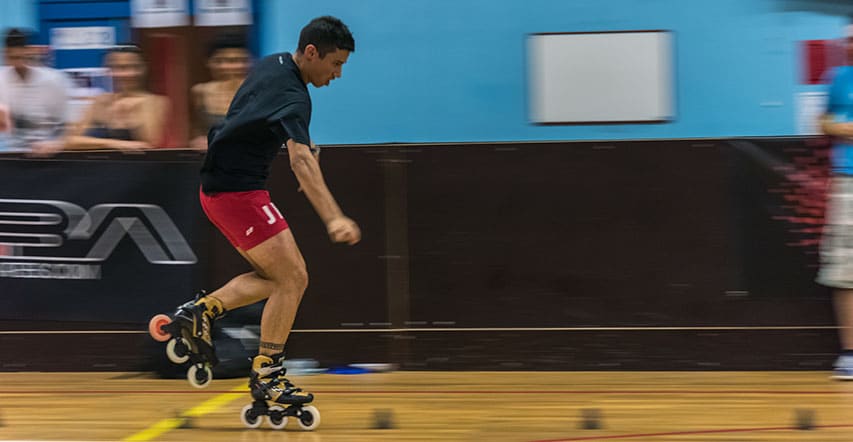
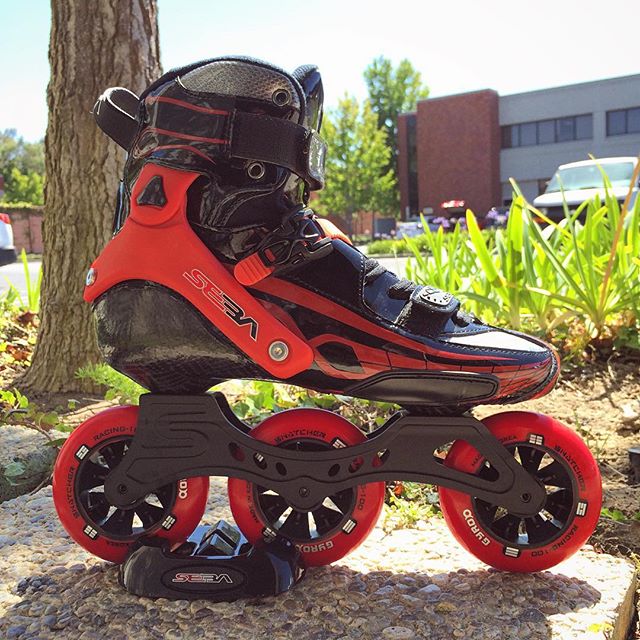 The discipline of speed slalom has seen its performance times drastically decrease throughout the years. Now, many skaters can skate the 20 cones in less than 5 sec (run-up distance included). The technical level of the skaters has improved a lot, just as the training techniques, even amongst the youngest ones.
The discipline of speed slalom has seen its performance times drastically decrease throughout the years. Now, many skaters can skate the 20 cones in less than 5 sec (run-up distance included). The technical level of the skaters has improved a lot, just as the training techniques, even amongst the youngest ones.
Now, in slalom skating, like in other disciplines, technological innovations have become key factors for performance improvement, just like the new swimsuits in swimming.
More inertia
First of all, bigger diameter means more inertia. At the start, it translates into a skate that takes longer to get into action. The wheels are heavier to start. On the other hand, given that there are only 3 wheels instead of 4, the difference is small, about 50 grams only.
A tighter trajectory
Another advantage of the 3×110 mm: The wheels are higher than the cones! You can pass far closer, even above, without moving them… Whereas you would knock them with a regular 4×80 mm set-up. The trajectory is thus tighter, more direct. You can spare precious tenths of seconds.
More maneuverability
Even if the wheels are bigger, you gain a little in maneuverability. The latter is influenced by the space between the contact points with the ground. On a frame with 4 wheels of 80 cm, this spacing is longer than with a 3×110 m frame for the same frame length. So that the skate turns more easily with a 3×100 m because less effort is needed to drive the skate between the cones.
What are the cons?
A higher center of gravity
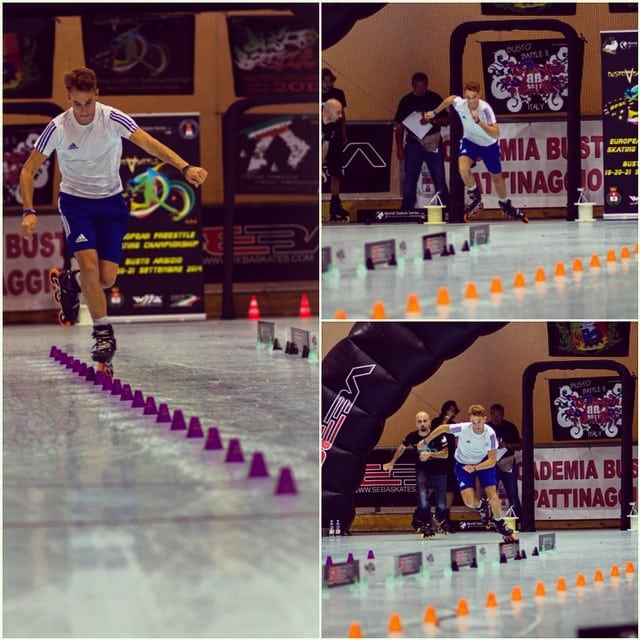 On the flipside, if big wheels provide undeniable inertia gain, they are also higher. So that you lose a little in stability, all the more as the spacing between the contact points is shorter than with a 4×80 set-up. You are higher and then less stable. You have to compensate with good skating technique and better balance.
On the flipside, if big wheels provide undeniable inertia gain, they are also higher. So that you lose a little in stability, all the more as the spacing between the contact points is shorter than with a 4×80 set-up. You are higher and then less stable. You have to compensate with good skating technique and better balance.
Less support for the ankle
A higher center of gravity also means more load for the ankle. Your tendons and muscles have to be more toned to compensate for the height. Tip: Choose a boot that is more rigid and with a higher cut.
More power and more technique needed
The slight gain of weight linked to that bigger diameter requires more power, particularly at the start. The training should be adapted consequently, with more muscle strengthening and work on starts. This training on power should be completed with technical training to get used to this diameter. It is essential to keep a clean start technique.
The market competition
Apart from the Seba model that we exclusively present in this article, other brands like Powerslide take a chance on the 3×110 short frame segment. It is the case with the ‘Pleasure Tool’ frame with a length of 243 mm.
In Asia, the brand ‘Takino’ knows great success with its 3×105 model ‘Dragon’ measuring 9.2 inches.
What to choose?
It is up to you according to your technical level, your body build and your age. Bigger diameters (3×100, 3×105 or 3×110 mm) are more suitable for powerful, winged and rather tall skaters. You should use it with a rigid boot that will provide more support and increase your precision.
A classic set-up (4×80 mm) will be preferable in younger categories where ankles are not yet toned enough to bear with the increase of height of the center of gravity.
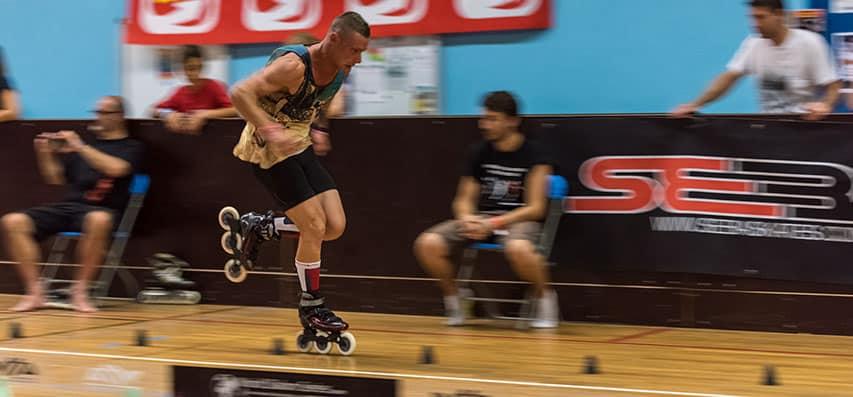
Can technology go further?
Yes! Today frame fixing points follow 2 standards: 165 and 195 mm. None of them allows to put the 3 wheels of 110 mm closer without risking to block a wheel with a fixing screw. A manufacturer could totally reduce the axle spacing to reach a frame with a 222 mm length! That would require to modify the spacing between the fixing points of the boot. You would then get a very compact skate. One could imagine a made-to-measure skate with a reworked structure and lower ground clearance. Who’s in?
Skaters’ comments
Jimmy Fort
I skate with a 3×100 mm Seba frame that will be soon available in shops. It is more maneuverable for starts and provides better weight bearings. I gain more speed, even at the start. It’s a question of habit. It took me some time to get used to it. For the moment this diameter is not very widespread in Europe but it has become the norm in China. It’s the future of speed slalom.
Yohan Fort
I’ve been skating with a 3×110 mm Seba frame for a few weeks now. It’s really great, it’s enjoyable. I don’t have all my bearings yet, I’m still adapting myself to it. It’s dope. You can simply use it to skate in the streets too. More and more skaters, especially the Chinese, already skate with these diameters. 100 and 110 mm set-ups should become widespread.
Alexandre Claris
It’s been 3 years that I’ve spotted 3-wheel frames in speed slalom, and 1 year that I’ve noticed that almost a quarter of the skaters have adopted them in the international series… After having spent a lot of time trying different set-ups, I am convinced that 3-wheel set-ups are the future of speed slalom. I gained 0.2 secs in simply switching to this set-up. The question I’m not sure yet is: 3×100, 3×105 or 3×110? I’ve been skating for one year and a half in 3×105, and the result is clear: I’m faster. I think that I would be even faster in 3×110 but I have trouble adapting myself to it and I don’t gain much. I think I’m going to turn towards the 3×100 soon.
The major asset of this set-up is that you constantly gain speed with it. You can feel the difference from the 10th cone onwards when you are well placed in the line. Obviously, it was not easy to adapt at first since this frame requires more power at the start of the run-up, but once you’ve found the right technique, it’s pure pleasure.
Strong points and points to be improved
 |
Pluses+ More inertia (keeps the speed) |
 |
Minuses– Higher center of gravity |
Useful links
Meeting with slalom champion Alexandre Claris
Translation: Chloe Seyres
Photos : Colin Morin and Alexandre Claris
Auteur
Alexandre Chartier
''alfathor''
Alexandre est le fondateur et webmaster de rollerenligne.com depuis 2003. C'est un passionné de roller en général, tant en patin traditionnel qu'en roller en ligne. Il aime le patinage à roulettes sous tous ses aspects : histoire, économie, sociologie, évolution technologique... Aspirine et/ou café recommandés si vous abordez un de ces sujets !
Photographe
Colin MORIN
''MORIN''
Pratiquant le roller depuis près de quinze ans, c'est cette activité qui m'a amené à la photographie, au travers des randos organisées dans notre belle ville de Nancy dans un premier temps. Curieux de toutes les pratiques du roller, mais aussi de tous les sports (notamment le triathlon), je suis particulièrement les compétitions dans le nord est de la France et quelques gros événements nationaux que je couvre avec mes collègues de l'équipe Mediaskates.


